Bridging the Gap Between Theory and Practice: Astronomical Instruments
Overview
The Department of Mathematics, Computer Science, and Statistics at the State University of New York at Oneonta (SUNY Oneonta) has a course called Ancient Mathematical Astronomy. The course was developed in Fall 2009 and was offered for the first time in Fall 2010. In addition to providing an introduction to the history of the astral sciences from ancient times up to Copernicus, a main focus of the course is to engage the students with the study, design, and construction of astronomical instruments. Such practical involvement not only increases the students’ understanding of the difficult material of the course, but also heightens their appreciation of it. This article details the design of the course, as well as the experience gained the two times that the course was offered at SUNY Oneonta, with a focus on the students' construction of astronomical instruments.
Bridging the Gap Between Theory and Practice: Astronomical Instruments - Introduction
Introduction
Soon after I began my current position in the Department of Mathematics, Computer Science, and Statistics at the State University of New York at Oneonta (SUNY Oneonta) in 2008, I began to think about how best to utilize my academic expertise in my classes. A Ph.D. graduate from Brown University's now defunct Department of History of Mathematics, my specialty is mathematical astronomy in ancient and medieval India. I felt strongly that incorporating the knowledge that I acquired in graduate school into my teaching would be valuable to SUNY Oneonta and its students, as well as to myself.
One persistent theme in my deliberations was the use of objects in the classroom. As a graduate student I was exposed to thorough analyses of a good number of astronomical instruments, and I spent time thinking through how they worked. I felt that similar exposure would be valuable to my students at SUNY Oneonta. I had already on some occasions brought objects to my Introduction to the History of Mathematics and Mathematics for the Liberal Arts classes at SUNY Oneonta, where each student would hold and briefly manipulate an abacus, a quadrant, or a replica of a Mesopotamian clay tablet containing a multiplication table. However, while I found that such brief handling of an object was definitely positive for the students' engagement and learning, it was not sufficient for them to get a deeper appreciation for the theory behind the object or for how it worked in practice. In other words, I was looking for a way to have my students engage with objects in a more substantial way, enabling them to understand both the theory behind an object and the construction and use of it.
During a conversation in April 2009, about a year and a half prior to the debut of the course that I was to design, Allen Anderson, SUNY Oneonta's Science Technician, helped me devise a plan for how to simultaneously achieve my goals of using my academic expertise in my teaching and greater student involvement with objects. I learned that SUNY Oneonta owns a 3D printer, as well as other machinery, by which parts for objects could be constructed using plastic, wood, metal, and other materials. This opened up an exciting pedagogical opportunity for me. While students are not allowed to operate any of the machinery due to insurance issues, they could engage with the design of astronomical instruments in consultation with Anderson and myself, and the designs could subsequently be constructed by Anderson. More specifically, Anderson could construct the necessary parts for a given astronomical instrument, which the students could subsequently assemble.
Bridging the Gap Between Theory and Practice: Astronomical Instruments - Designing a Course in Ancient Mathematical Astronomy
Designing a Course in Ancient Mathematical Astronomy
During Fall 2009, I designed a new course at SUNY Oneonta with the title Ancient Mathematical Astronomy. The course was based on my academic expertise and the idea of incorporating design and construction of objects into my teaching. Ancient Mathematical Astronomy is a 300-level course that provides an introduction to and a survey of the history of the astral sciences from ancient Mesopotamia to Copernicus. Beginning with astronomical records kept by Mesopotamian priests, the course traces the history and development of astronomy with an emphasis on the role of both mathematics and observation in the formation of astronomical theories and models. As an important part of the course, the students, divided into groups, are asked to research and design an astronomical instrument of their choice. The parts for the instruments are constructed by Allen Anderson, after which the instruments are assembled by the students. The instruments should ideally be tested by simple observations, though the feasibility of this step depends on the instrument in question, time available, and the weather.
Course objectives
By incorporating the practical component of instrument construction into the course, I seek to root mathematical theory in practical application with the aim of providing my students with a solid understanding of how the models of mathematical astronomy work. The idea is that the course should provide an attractive elective for our Mathematics majors that draws on both the history of mathematics and applied mathematics. In fact, one of the justifications for adding Ancient Mathematical Astronomy as a permanent course was that it would provide an elective with a focus on applied mathematics, an underrepresented branch of mathematics in my department.
The main lesson that I want my students to take away from the course is knowledge of the history and development of the astral sciences and their role in world intellectual history. More specifically, I want the students to understand and appreciate the role played by mathematics in the formation of astronomical theories and models, and, more generally, in the formation of theories and models in the sciences. Another aspect that I seek to emphasize is awareness of natural phenomena that were hugely important to our ancestors in the past, but which now mostly pass unnoticed due to the use of modern technology.
Course prerequisites
Prerequisites are an important consideration for any new course, and I gave serious thought to the prerequisites for Ancient Mathematical Astronomy. On the one hand, I did not want the course to be too restricted; on the other hand, I wanted to have mature students with sufficient mathematical skills to handle the difficult material of the course. After some reflection on the matter, I decided to make Ancient Mathematical Astronomy a 300-level course and require that students enrolling in it must have passed either Calculus II or Discrete Mathematical Structures with a grade of C or better (the latter course introduces students to mathematical proof at SUNY Oneonta). I felt that completion of either of these courses would ensure that a student possessed sufficient mathematical maturity and capability. The reason for requiring only one of the courses and not both, which is generally the case for higher-level mathematics courses at SUNY Oneonta, is that I did not want to exclude Physics and Astronomy majors or minors, who are required to take Calculus II but only rarely take Discrete Mathematical Structures. (The Department of Physics and Astronomy at SUNY Oneonta offers a major in Physics and minors in Physics and Astronomy.) At the same time, I did not want Mathematics majors who had taken Discrete Mathematical Structures but not yet Calculus II to have to wait to take the course, which is offered infrequently.
Course modules
SUNY Oneonta operates with a semester system, each of the two semesters per year being 15 weeks long, including a week for finals. Regular classes meet three times per week for 50 minutes per meeting.
The theoretical parts of the course are divided into six modules:
- Introduction to ancient astronomy (approx. 3 weeks), which makes students familiar with ancient astronomy and cosmological models, and introduces them to various astronomical instruments.
- The birth of mathematical astronomy (approx. 2 weeks), the focus of which is the formation of ancient Mesopotamian astronomy, including a discussion of how belief in astral omens led to careful observational records.
- Ancient Greek and Hellenistic astronomy (approx. 3 weeks), which explores the formation of Greek geometrical models of the heavens, starting with early Greek astronomy and ending with Ptolemy and the Almagest.
- Indian astronomy (approx. 2 weeks), which explores classical Indian astronomy, though pre-classical Indian astronomy is also discussed.
- Islamic astronomy (approx. 2 weeks), which explores the history and development of astronomy in the Islamic world.
- Astronomy in Medieval and Renaissance Europe (approx. 2 weeks), which examines the reception of astronomy from the east in Europe and the development it took there.
The mathematical content of the course includes numerical models of planetary motion from ancient Mesopotamia, geometric models of planetary motion from ancient Greece and other cultures, spherical geometry, and spherical trigonometry. These topics are by no means simple, and it requires maturity and dedication on the part of the students to master them.
Course textbook
For the course textbook I decided on James Evans' excellent The History and Practice of Ancient Astronomy (Oxford University Press, 1998). It is a book that I have benefited from in my own studies and research, and one that I felt would be sufficiently accessible to the students in the course. In fact, the students who have taken the course have expressed to me that they enjoyed the textbook, which they found informative and helpful.
Bridging the Gap Between Theory and Practice: Astronomical Instruments - Teaching a Course in Ancient Mathematical Astronomy
Teaching a Course in Ancient Mathematical Astronomy
The course was offered for the first time in Fall 2010. At that time, the course ran as a special-topics course due to a delay in final approval over uncertainty over how to handle a potential student fee for the materials used to construct the instruments. Soon after the special-topics course started, the course received full approval as a permanent course at SUNY Oneonta. Four years later, in Fall 2014, the course was offered again. As such, the course has been offered twice at SUNY Oneonta. The present article details my experiences from teaching Ancient Mathematical Astronomy these two times.
Both times it was offered, the course had an excellent enrollment for an elective in the Department of Mathematics, Computer Science, and Statistics at SUNY Oneonta. The following table shows the enrollment in Fall 2010 and Fall 2014, including the majors of the students enrolled. The data for Fall 2010 includes an auditor, an Adolescence Education: Mathematics major, who, while not required to do any of the coursework and unable to receive a final grade, participated fully in the course.
| Major | Fall 2010 | Fall 2014 | |
| Mathematics | 5 | 3 | |
| Adolescence Education: Mathematics | 5 | 2 | |
| Physics | 1 | 5 | |
| Adolescence Education: Physics | 1 | 1 | |
| Chemistry | 2 | 0 | |
| Art | 1 | 0 | |
| Total | 15 | 11 |
In Fall 2010, the course attracted a more diverse range of majors than expected, whereas in Fall 2014, the range of majors was limited to precisely those majors that I originally had in mind for the course.
Required course work
Ancient Mathematical Astronomy has no sit-in tests. Instead it is required for the students to hand in five assignments, an instrument paper, and a final research paper. In addition, homework problems and readings are assigned on a regular basis, and students are required to make presentations before the class.
The idea of the instrument paper is to familiarize the students with the instrument that they are undertaking to design. In addition to the history of the instrument, the instrument paper must include a theoretical section on how the instrument works, as well as notes on the design of the instrument. Ideally, the students should also include sketches of their design. More often than not, however, the papers did not include useful sketches. One reason for this is that it is hard to produce the sketches before understanding the theory behind the instrument, an understanding that the instrument paper is meant to bring about.
For the part of the course dealing with design of instruments (including working on the instrument paper), the students are divided into groups of two or three, who in consultation with me agree on an instrument to work on. In Fall 2010, each student wrote an individual instrument paper, whereas in Fall 2014 each group handed in one paper for all the members. I felt that requiring individual papers was unnecessary given that the students work so closely together on researching and designing the instrument. After receiving feedback from me on the instrument papers, the groups began actively designing the instrument. During this phase, the students worked closely with Anderson, who advised on what is feasible and offered feedback on the ideas of the students. Anderson would later construct the parts required by the students' designs.
The final research paper is an open and flexible paper meant to allow each student to dive into a topic that they find especially interesting. The final research paper can be focused on the history of astronomy, formulae and derivations from mathematical astronomy, or philosophical questions relevant to the development of astronomy. Among the topics chosen by students are the computation of square roots in the ancient world, archeoastronomy, Ptolemy's Almagest, and the use of sine tables in the ancient world.
Planetarium and Observatory visits
SUNY Oneonta has a planetarium with a digital projector system that can provide views of the stars, planets, luminaries, and constellations, as well as 3D movies. The system is based on Evans & Sutherland Digistar 4 software. The Planetarium is available for class visits by appointment.
The college also has an observatory. The observatory has a large number of telescopes, both mounted and mobile. In particular, the SUNY Oneonta Observatory owns a 1-meter JMI NTT-40 mobile telescope, the largest optical telescope in the state of New York. The Observatory hosts open nights, and is also available for class visits by appointment.
I naturally sought to make use of these two excellent resources in Ancient Mathematical Astronomy. In Fall 2010, the class visited both the Planetarium and the Observatory. At the Planetarium, the class saw a presentation by a SUNY Oneonta student on astronomical coordinate systems. The visit to the Observatory, guided by former Planetarium and Observatory Director and astronomy professor Dr. Quinn Minor, focused on observing the moon by telescope.
In Fall 2014, the class made two visits to the Planetarium. A planned visit to the Observatory had to be canceled due to bad weather, and it was not possible to find another date that worked for all the students. The first visit to the Planetarium featured a presentation on astronomical coordinate systems. At the second visit, the class watched the 3D documentary Stars of the Pharaohs from 2004, produced by Evans & Sutherland. Both presentations at the Planetarium were given by Planetarium and Observatory Director and astronomy professor Dr. Joshua Nollenberg, who was also scheduled to guide the Observatory visit that was canceled.
Course fee
It was originally unclear how expensive the construction of the instruments would be, and I expected that there would be a small course fee per student, perhaps $20 or so. However, it turned out that the cost of constructing the instruments was low enough that the Science Technician's budget covered most of it. Students paid for minor things here and there (mirrors for the sextants, for example), but the costs of most of the materials were covered by the Science Technician.
Bridging the Gap Between Theory and Practice: Astronomical Instruments - Design and Construction of Astronomical Instruments
Design and Construction of Astronomical Instruments
I will not go into the the technical details of the astronomical instruments that were designed and constructed the two times that Ancient Mathematical Astronomy ran at SUNY Oneonta. For each instrument described below, there are one or more links to Internet pages with more information, including images of historical specimens. There are furthermore plenty of good sources on the topic of astronomical instruments, including James Evans' book listed above, which has an extensive bibliography. Thus, the following is a general presentation of the instruments that were designed and constructed in Fall 2010 and Fall 2014.
Instrument design phase
For the design phase of the course, the students in the class were divided into several groups. In Fall 2010, there were six groups with two students each and one group with three students (the third being the auditor), and in Fall 2014 there were three groups with three students each and one group with two students. Each group decided on an instrument to design. The choice of instrument was made in consultation with me and with feedback from Anderson, who provided information on whether the group's first ideas for designing the instrument were feasible with the equipment available.
The following table shows the choices of instruments and how many groups undertook to design each of them in Fall 2010 and Fall 2014.
| Instrument | Fall 2010 | Fall 2014 | |
| Armillary sphere | 2 | 1 | |
| Astrolabe | 1 | 0 | |
| Jacob's staff | 1 | 0 | |
| Quadrant | 0 | 1 | |
| Sextant | 1 | 1 | |
| Sundial | 2 | 0 | |
| Telescope | 0 | 1 | |
| Total | 7 | 4 |
After the formation of the groups and final decisions on the instruments, each group began to research their instrument. This research culminated in an instrument paper, as described above, after which the group began the actual design process.
Eight class periods of the course were used exclusively for the students to work on their designs. Anderson and I were both available at those times (or an appointment could be made to meet with one or both of us at another time). When meeting with Anderson or me, the students would explain what parts would be involved, provide sketches and dimensions, and justify that the parts would fit together so as to make the instrument functional. Some of the instruments required only a few parts, others more. Anderson and I would discuss the students' ideas and designs, address mistakes, and make suggestions. Students were expected to follow a timeframe that allowed for Anderson to construct a specimen for each group by the last week of the semester for presentation to the other students in the course.
Machines and materials used
As has already been mentioned, SUNY Oneonta owns a 3D printer, which serves the School of Natural and Mathematical Sciences (in Fall 2010, before the restructuring of SUNY Oneonta from two large academic divisions to five schools, it served the Division of Science and Social Science) and is operated by the college's Science Technician, Allen Anderson. This was the machine used for most of the parts of the astronomical instruments designed by the students in Fall 2010. However, in contrast to Fall 2010, the 3D printer was not used at all to produce parts for the instruments designed in Fall 2014. This was partly due to the 3D printer not being operational at the beginning of the semester, prompting the students and Anderson to consider alternatives.
The SUNY Oneonta 3D printer operated by Anderson is a Dimension BST-768. The machine prints in a very strong ABS plastic and has an \(8''\times 8''\times 12''\) build volume. The models created by the machine are functional and even machinable. The machine requires an STL file to generate a model. At SUNY Oneonta, Anderson uses SolidWorks to generate the required STL file, though there are also scanning devices that can be used to generate the file directly. At this point in time, the Dimension BST-768 is an old machine in terms of material and technology. It was one of the first commercially available 3D printers, and there have been many improvements made since then. The biggest issue with SUNY Oneonta's 3D printer is the resolution of detail, which is limited by the size of the material “stream” that is used to create whatever model is being printed. The resolution of the Dimension BST-768 is on the order of \(0.003''.\)
In addition to the 3D printer operated by Anderson, the Department of Art at SUNY Oneonta owns a 3D printer as well. The Department of Art's 3D printer is also a Dimension and similar to the one operated by Anderson, though it is a newer model. Recently, in Fall 2014, the Department of Mathematics, Computer Science, and Statistics also acquired a 3D printer. This 3D printer, a MakerGear M2, is a low-end desktop 3D printer. However, the 3D printers of the Department of Art and the Department of Mathematics, Computer Science, and Statistics have not been used for the construction of instruments in Ancient Mathematical Astronomy.
Besides the 3D printer, other tools were used as well to construct parts out of metal, wood, and plastic. For example, the construction of the wooden quadrant in Fall 2014 was done with a handheld electric saw.
Notes on the design and construction phases
Overall, no insurmountable obstacles were encountered while designing and constructing instruments. Certain things took longer than anticipated and others were more difficult for the students than expected. In particular, given difficulties and time constraints, we had to change plans for a few instruments, namely, the astrolabe and the telescope. Still, overall we were on track with the timeframe that I had in mind, and in both Fall 2010 and Fall 2014 the students were able to present their instruments to the class at the end of the semester.
Due to a combination of time constraints and cloudy weather at the end of the course in both Fall 2010 and Fall 2014, we unfortunately did not end up doing much in terms of using the instruments practically. Had the time been available, I would have liked to, for example, mark the shadow of the sundials at regular time intervals during the day and to measure the angular distance between two heavenly bodies with the Jacob's staff and the sextant at night. However, it turned out to be too difficult to organize it during the end-of-semester rush.
Bridging the Gap Between Theory and Practice: Astronomical Instruments - Three Armillary Spheres
Three Armillary Spheres
An armillary sphere is essentially a model of the sky, which is constructed by a number of rings on the same sphere. The system has the earth as its center, and the rings represent astronomically important features such as the celestial equator, the ecliptic, and the tropics. The armillary sphere is an ancient astronomical instrument that was used in both ancient Greece and ancient China, and by later cultures.
For more information about the armillary sphere, the Starry Messenger Project, developed by the Whipple Museum of the History of Science and the Department of History and Philosophy of Science at Cambridge University, has a website dedicated to the instrument at http://www.hps.cam.ac.uk/starry/armillary.html. In addition, Convergence has an image of a beautiful Italian armillary sphere from 1550 CE at http://www.maa.org/publications/periodicals/convergence/mathematical-treasures-italian-armillary-sphere.
A total of three groups undertook to design an armillary sphere, two in Fall 2010 and one in Fall 2014.
One of the groups that undertook to design an armillary sphere in Fall 2010 produced the most successful instrument of that course. Both members of the group worked hard and were enthusiastic throughout. Their armillary sphere was simplified in that it did not possess all of the items usually found on such an instrument (such as the arctic circles), but it had the main features, including the equator, the tropics, and the ecliptic.
The parts of the armillary sphere were movable, though not sufficiently so to be used for serious purposes. As such, the armillary sphere served more of an instructional purpose. The instrument was constructed mainly of parts created by the 3D printer. All of the rings and legs were printed on the 3D printer. The heavenly sphere of the instrument was attached to the main body of the instrument by iron pins to allow for the main body to rotate.
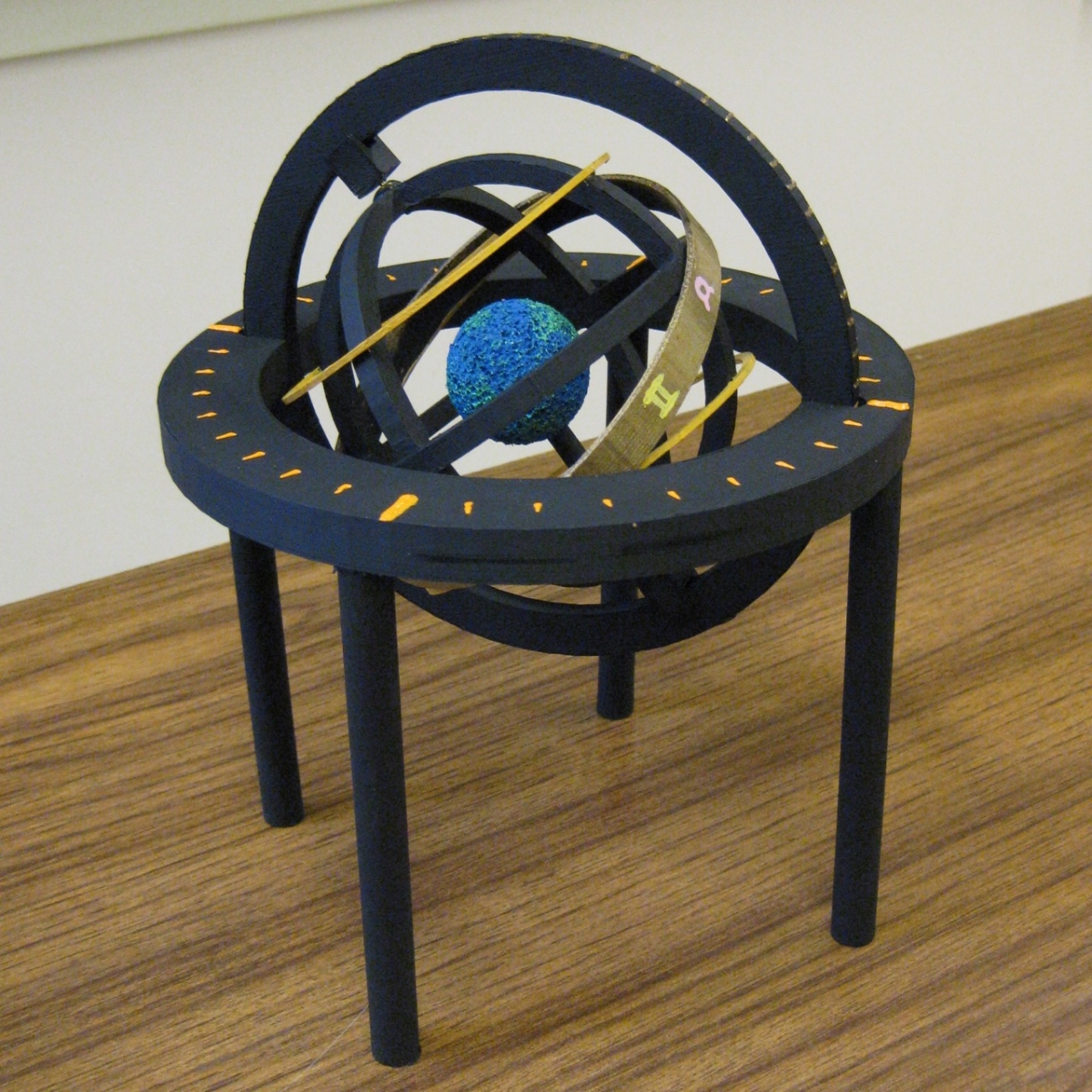
Figure 1. Student-built armillary sphere from Fall 2010 Ancient Mathematical Astronomy class (photograph by Toke Knudsen)
The armillary sphere is shown in the photo above. It is visually pleasing and could easily serve in an instructional capacity.
Another group undertook to design an armillary sphere in Fall 2010. In this case, the rings were made by the 3D printer and an iron stick was used as the central axis.
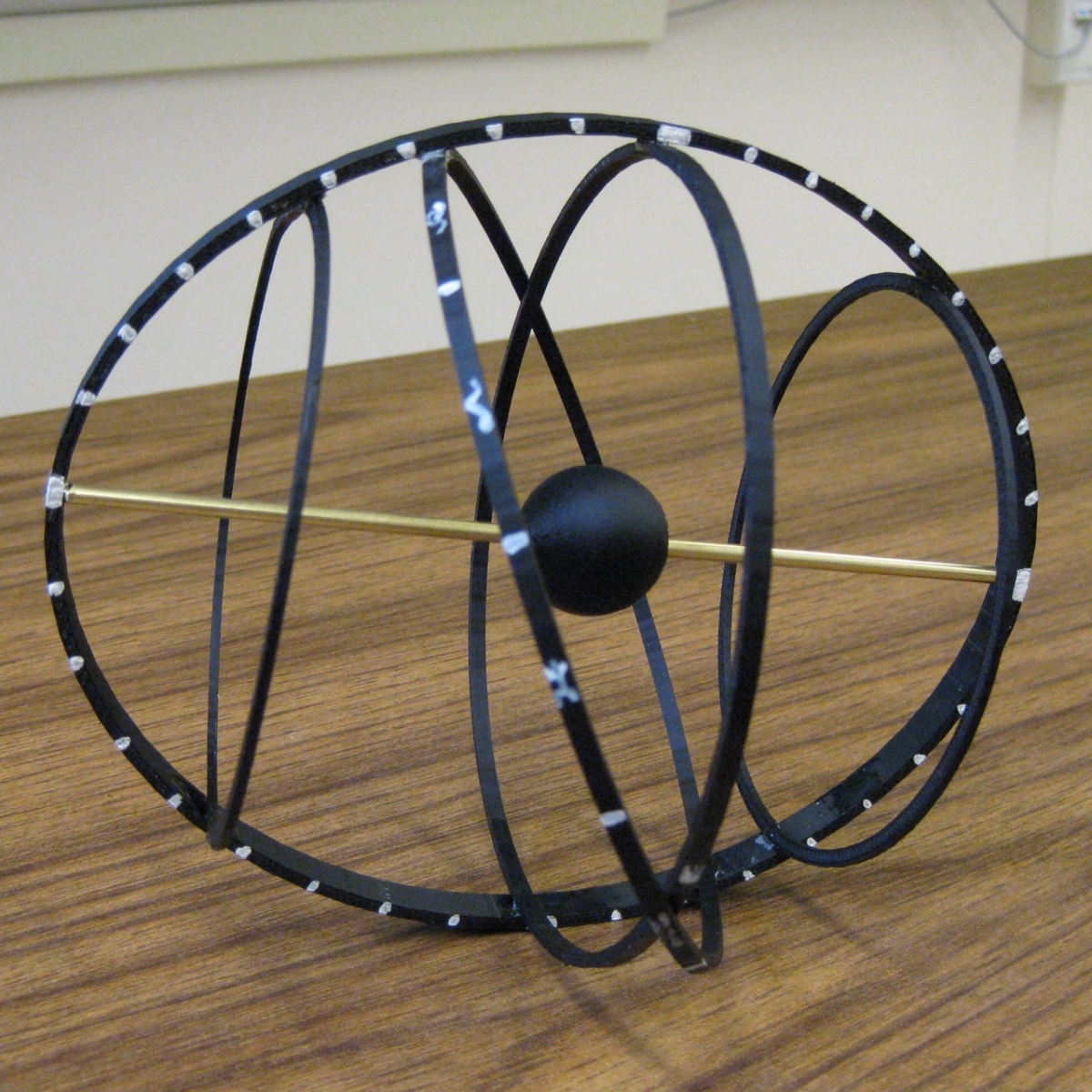
Figure 2. Another student-built armillary sphere from Fall 2010 Ancient Mathematical Astronomy class (photograph by Toke Knudsen)
The second armillary sphere from the Fall 2010 class is shown in the above photo. As can be clearly seen, the instrument did not ultimately fit together as was intended, and it was never attached to a body that would allow for it to be displayed properly or used.
In Fall 2014, one group decided to design an armillary sphere. Based on my experience from Fall 2010, I had no objections to this choice.
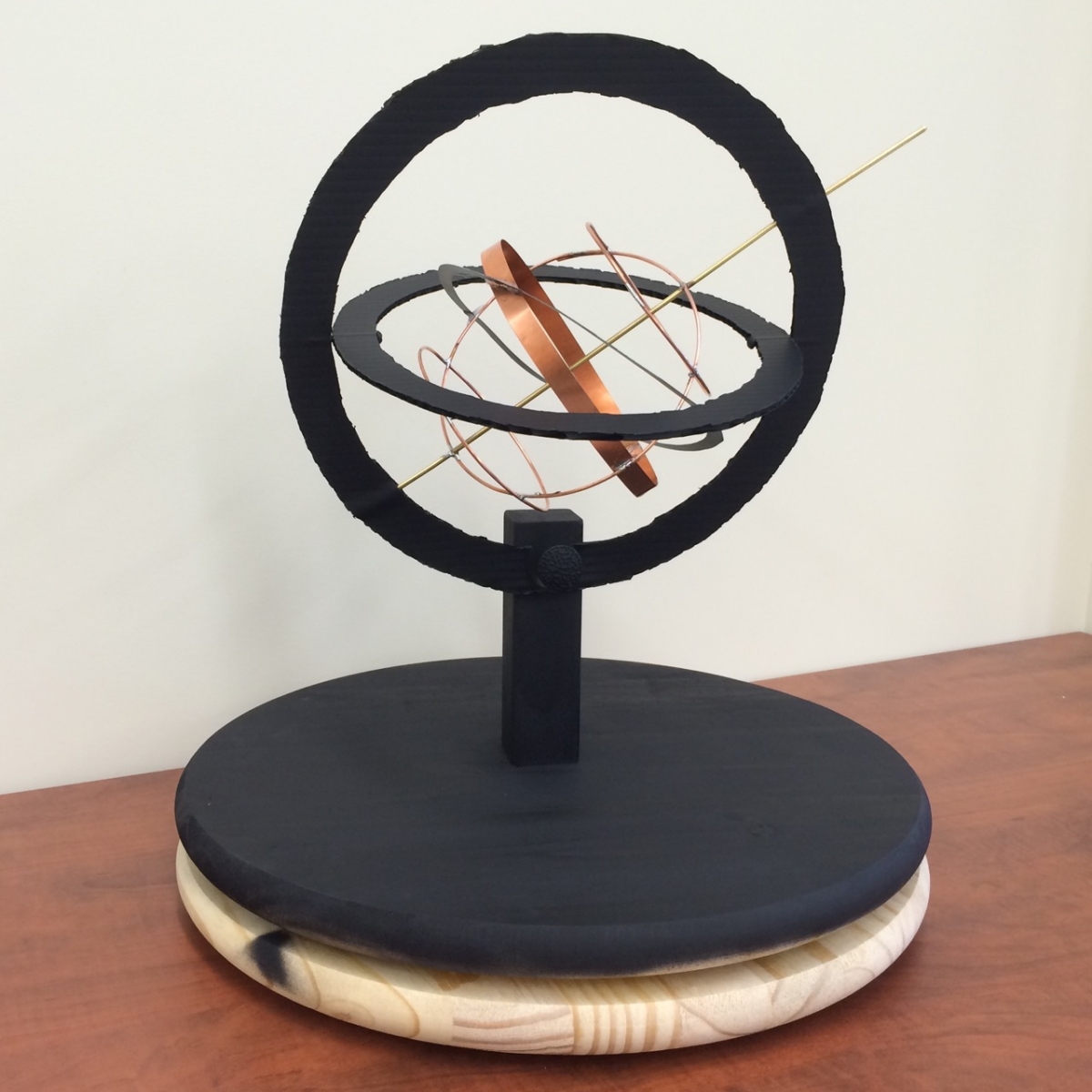
Figure 3. Student-built armillary sphere from Fall 2014 Ancient Mathematical Astronomy class (photograph by Toke Knudsen)
The above photo shows the armillary sphere from Fall 2014. The parts for this armillary sphere were made without using the 3D printer. The base consists of two circular wooden pieces, allowing for the instrument to rotate. The rings representing the celestial sphere are made from plastic, while the body of the instrument is made of copper rings constructed by Anderson. The instrument has the equator, the tropics, and the ecliptic, as was the case with the armillary spheres from Fall 2010.
While visually pleasing and able to serve as an instructional tool, the instrument was less successful than the best one from Fall 2010. For example, the main body of the instrument is too heavy for the plastic rings, for which reason the instrument droops slightly. The angles between the equator and the tropics are also not correct. These are somewhat minor things, however, that could have been corrected had there been more time available.
Bridging the Gap Between Theory and Practice: Astronomical Instruments - A Quadrant
A Quadrant
A quadrant is an instrument used to measure the angle between a heavenly body and the horizon; that is, the altitude of a heavenly body. The instrument is a quarter of a circle with the circumference portion divided into 90 degrees.
For more information about the quadrant, Epact, an electronic catalogue of medieval and renaissance scientific instruments from four European museums, has an article dedicated to the quadrant at http://www.mhs.ox.ac.uk/epact/article.php?ArticleID=14. In addition, the Starry Messenger Project, developed by the Whipple Museum of the History of Science and the Department of History and Philosophy of Science at Cambridge University, has a website dedicated to the quadrant and the sextant at http://www.hps.cam.ac.uk/starry/quadrant.html.
One group in Fall 2014 decided to construct a quadrant. The group's quadrant was made of wood, and, with a radius of \(47.75'',\) it is a large instrument. The group made the decision to make a large instrument because its accuracy would be significantly greater than that of a small, handheld quadrant. In other words, the larger the quadrant, the more accurately one can determine the altitude of the celestial body in question.
The quadrant was designed and constructed entirely by the students, who used the workshop belonging to one of them for the construction part.
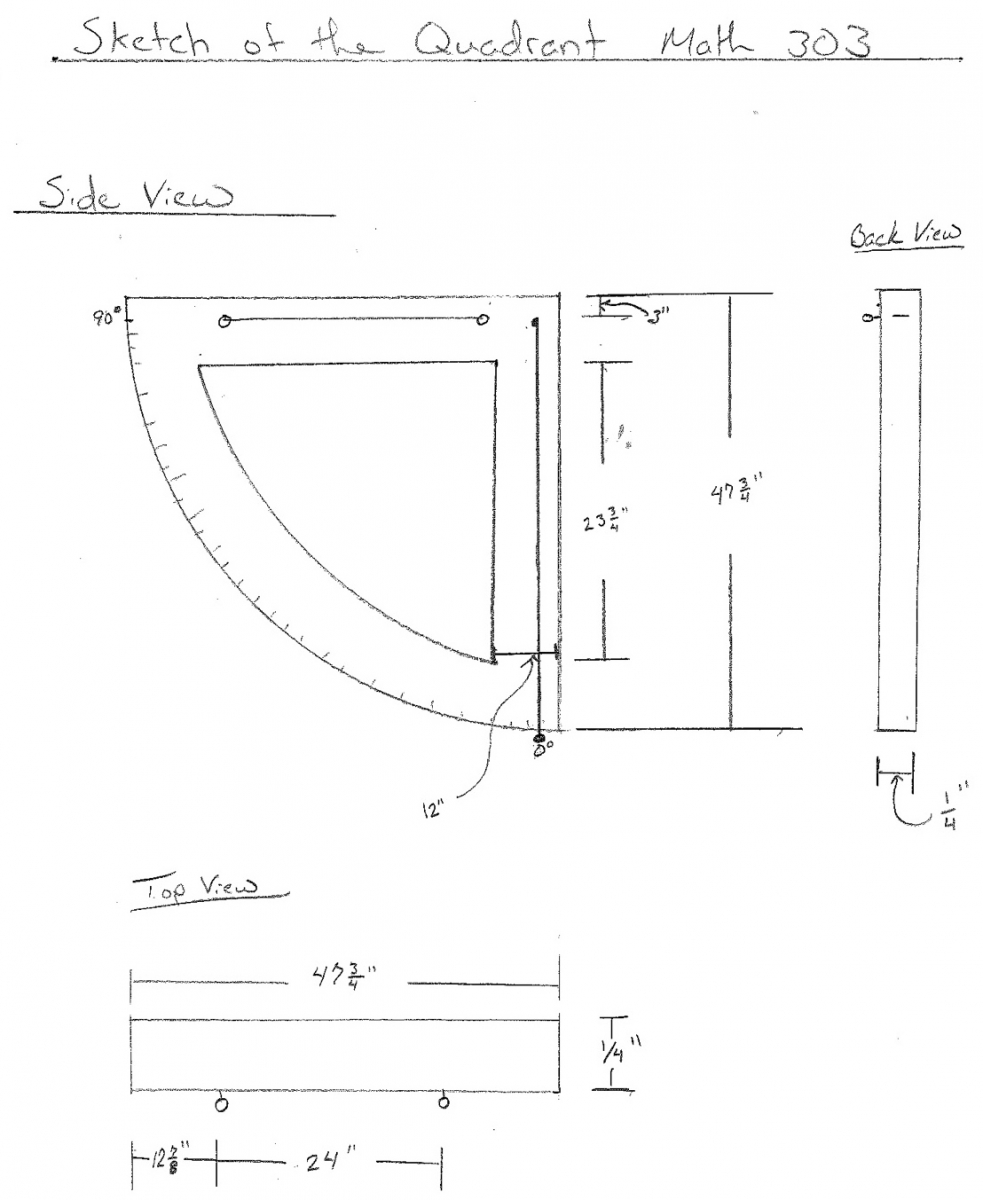
Figure 4. Student plans for a quadrant from Fall 2014 Ancient Mathematical Astronomy class
Figure 4 shows the group's sketch of a quadrant. The design of the instrument followed this original sketch.
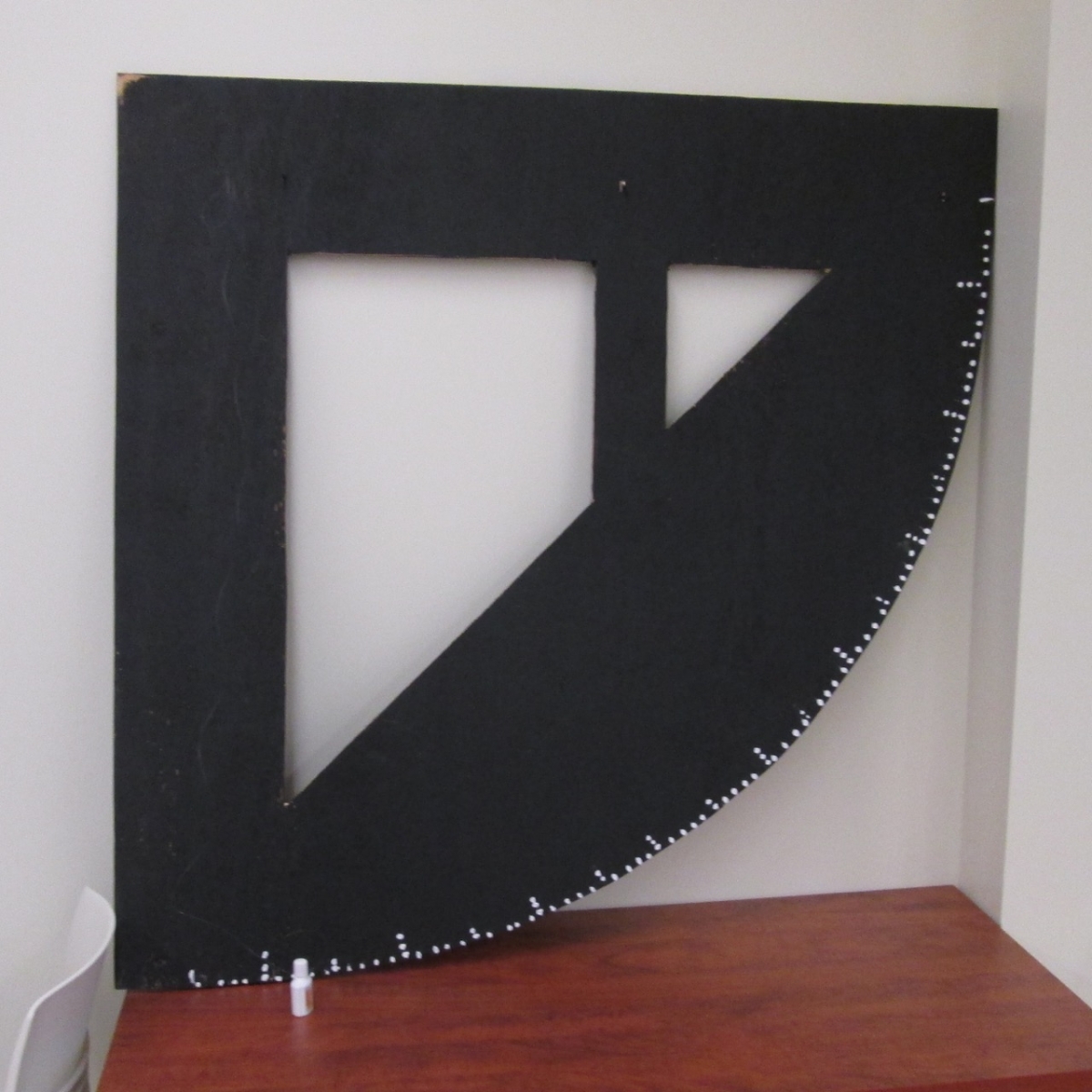
Figure 5. Completed quadrant from Fall 2014 Ancient Mathematical Astronomy class (photograph by Toke Knudsen)
The above is a photo of the finished quadrant. It is not entirely clear from the photo, but the top edge of the quadrant has three sights lined up properly. The small white bottle seen at lower left is suspended from the top-left corner of the instrument and serves as a plumb. The circular edge of the instrument has the degrees from 0 to 90 marked on it.

Figure 6. Students demonstrate the use of their quadrant in Fall 2014 Ancient Mathematical Astronomy class (photograph by Toke Knudsen)
The quadrant can be used practically, as seen in the above photo of the members of the group demonstrating how to use the instrument to the rest of the class. The small white bottle is seen hanging from the quadrant at the right side of the leftmost table, marking an angle on the instrument. The quadrant's accuracy, however, was not great since the marks for the degrees were not marked accurately enough.
Bridging the Gap Between Theory and Practice: Astronomical Instruments - Two Sextants
Two Sextants
A sextant is an instrument used to measure the angle between two objects, though especially between a heavenly body and the horizon; that is, the heavenly body's altitude. As such, a sextant serves the same purpose as a quadrant. However, the sextant has a much greater accuracy than a quadrant. In particular, a small sextant offers greater accuracy than a large quadrant.
For more information about the sextant, the Starry Messenger Project, developed by the Whipple Museum of the History of Science and the Department of History and Philosophy of Science at Cambridge University, has a website dedicated to the quadrant and the sextant at http://www.hps.cam.ac.uk/starry/quadrant.html.
Two groups undertook to design a sextant, one in Fall 2010 and one in Fall 2014.
The sextant designed in Fall 2010 was constructed from two mirrors and parts made using the 3D printer.
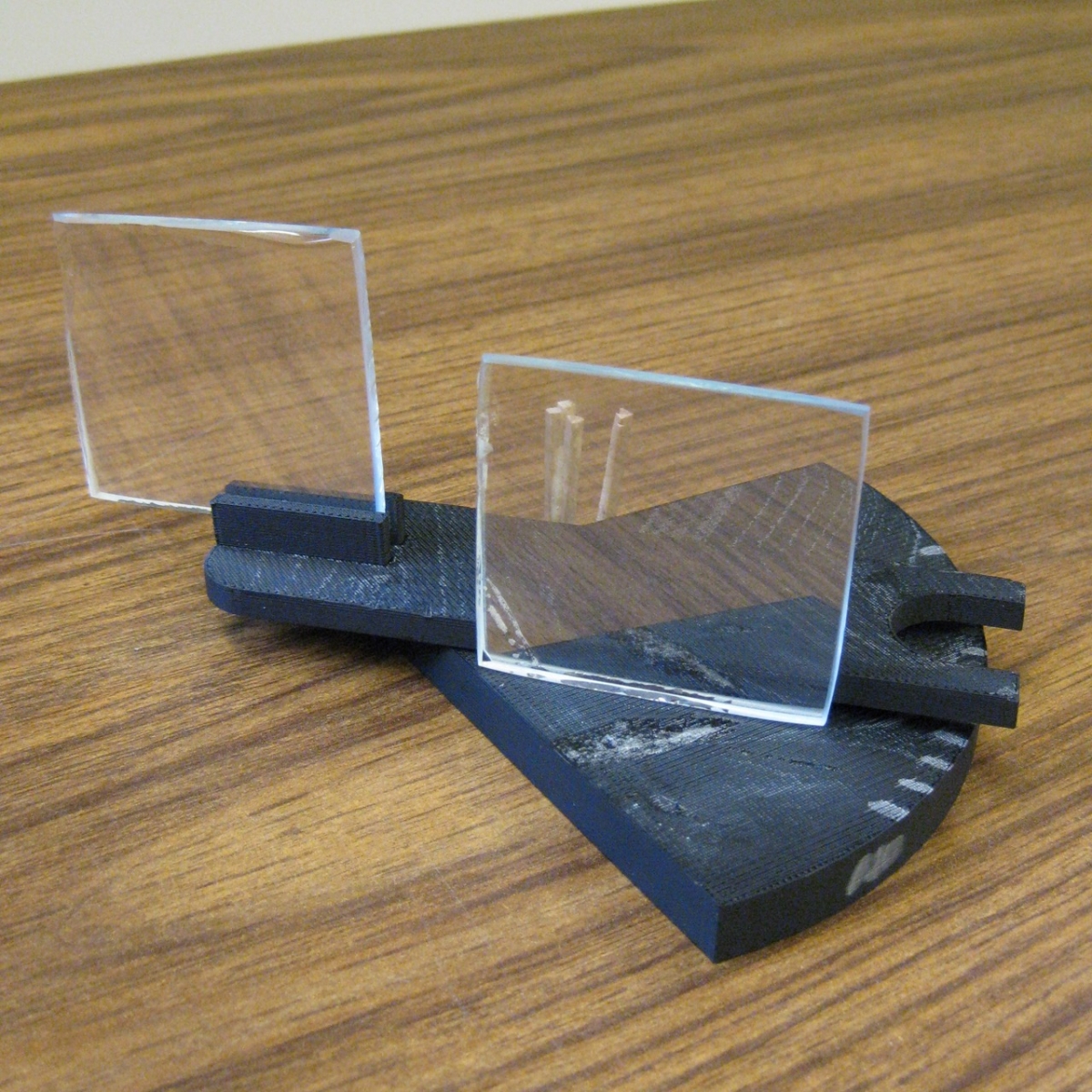
Figure 7. Student-built sextant from Fall 2010 Ancient Mathematical Astronomy class (photograph by Toke Knudsen)
The above photo shows the sextant from Fall 2010. The sextant did not work. The parts of the instrument could not move as they should, and it had no working sight.
The sextant designed in Fall 2014 was made of wood and metal parts. This sextant was designed and constructed entirely by the students, who used their own tools and material for the construction part.
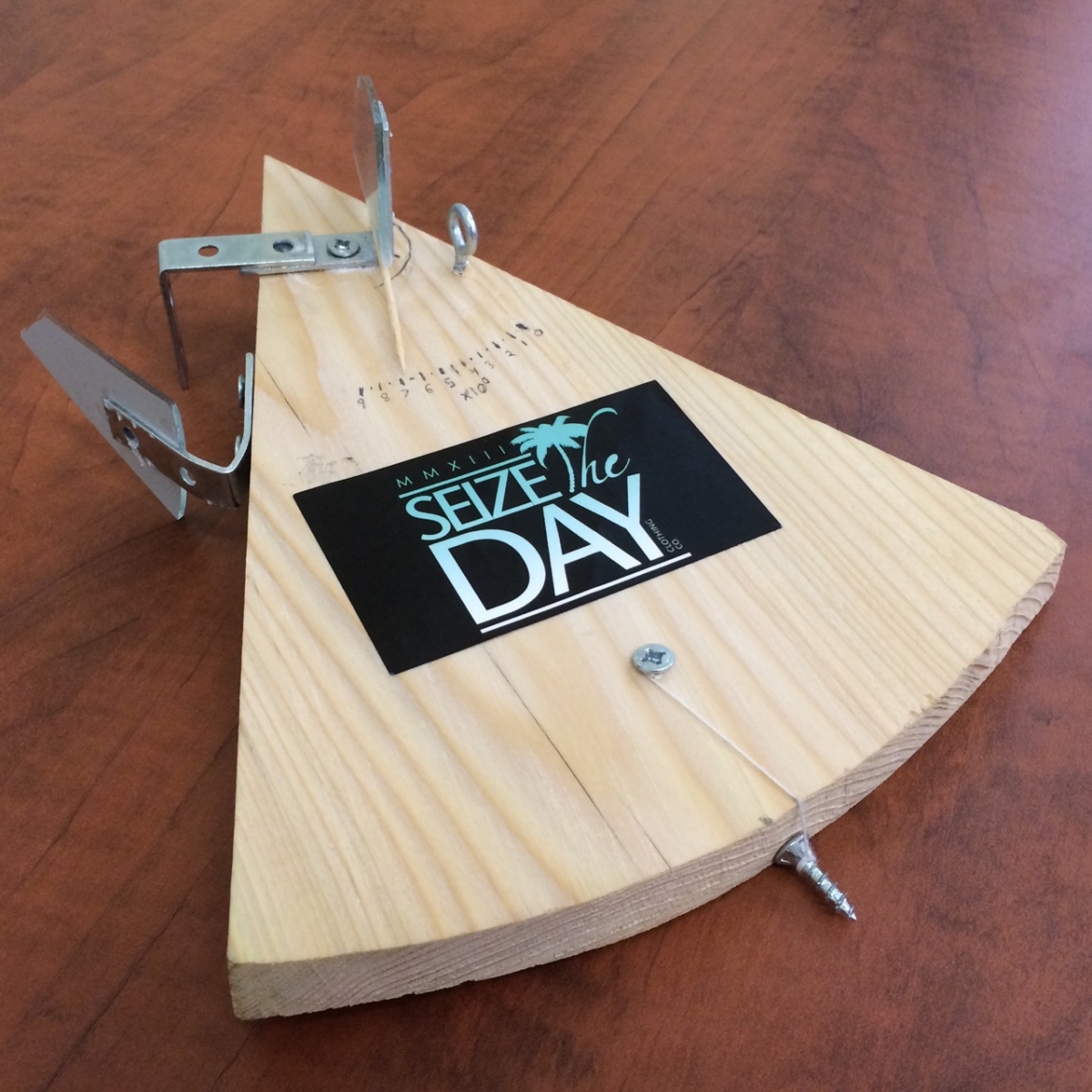
Figure 8. Student-built sextant from Fall 2014 Ancient Mathematical Astronomy class (photograph by Toke Knudsen)
The above photo shows the sextant from Fall 2014. A screw is suspended by a string from the base of the instrument. When the string covers the pencil mark on the circular edge of the base, the instrument is aligned correctly. The mirror at the top can then be adjusted, and the toothpick attached to it marks an angle. The metal loop at right functions as a sight. The sextant works as it should. The students estimated that its accuracy is around 5 degrees.
Bridging the Gap Between Theory and Practice: Astronomical Instruments - An Astrolabe, a Jacob’s Staff, and a Telescope
An Astrolabe, a Jacob’s Staff, and a Telescope
Astrolabe
An astrolabe is a complex instrument that has multiple uses, including determining and predicting the positions of the heavenly bodies.
For more information about the astrolabe, the Museum of the History of Science at Oxford University has a website dedicated to the astrolabe at http://www.mhs.ox.ac.uk/astrolabe/. In particular, there is a presentation on how to use an astrolabe to tell time at http://www.mhs.ox.ac.uk/exhibits/using-an-astrolabe-1/. In addition, Convergence has an image of a beautiful Italian astrolabe from 1558 CE at http://www.maa.org/publications/periodicals/convergence/mathematical-treasures-italian-astrolabe.
One of the groups in Fall 2010 ambitiously decided to design an astrolabe. It soon turned out that computing the lines to be drawn on the instrument was a difficult task for the students, and, in addition, that etching them on the instrument would be impossible to do with the means at our disposal. We therefore decided to photocopy the model of an astrolabe in the textbook onto transparency sheets and then attach the sheets on a base of plexiglass. This provided us with a working and nice-looking astrolabe, though a consequence was that the astrolabe was configured for the latitude of Seattle, Washington, not Oneonta, New York.
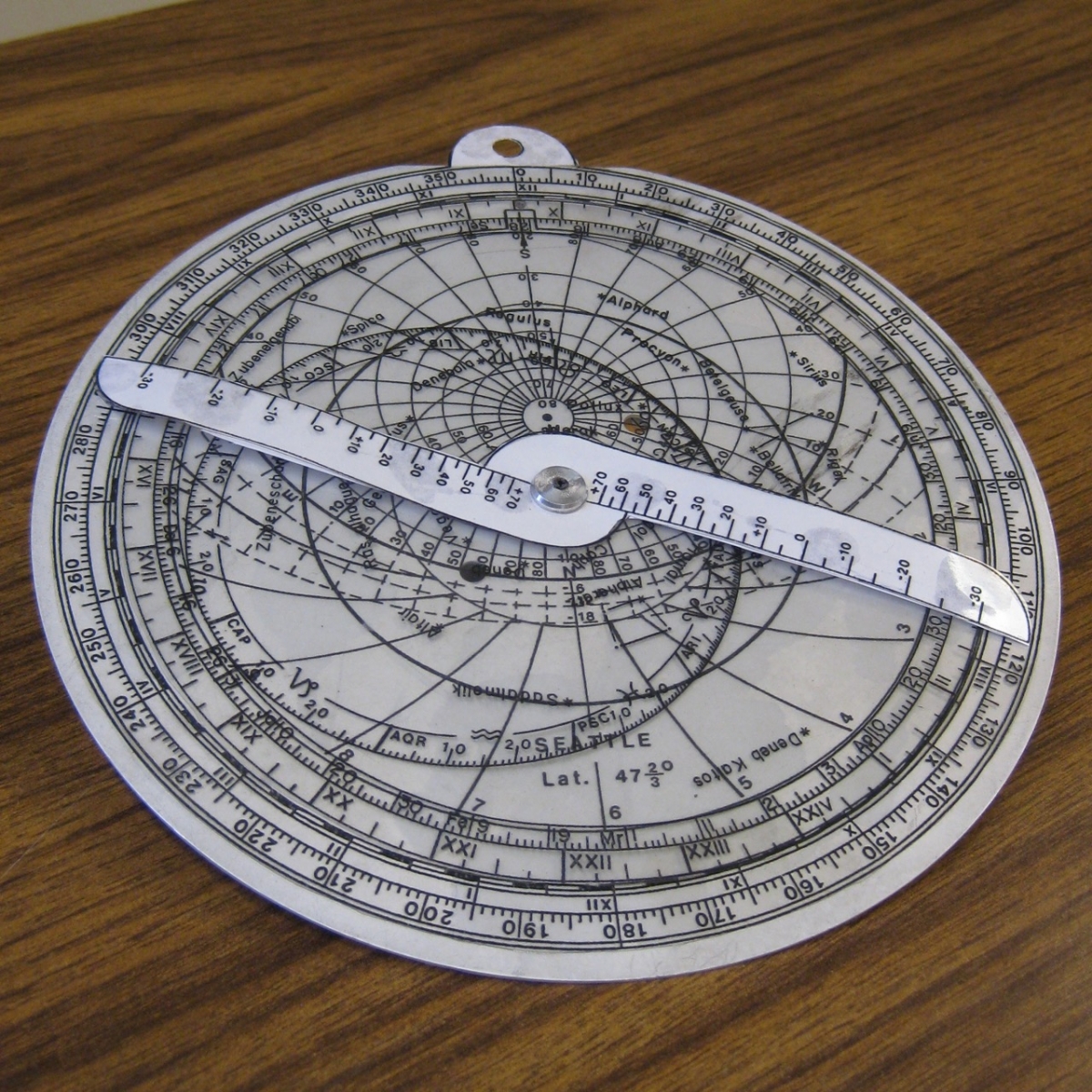
Figure 9. Student-built astrolabe from Fall 2010 Ancient Mathematical Astronomy class (photograph by Toke Knudsen)
A photo of the astrolabe constructed in the course is shown above. It worked as it should.
Based on the students' work with designing an astrolabe in Fall 2010, I decided to recommend against choosing this as an instrument in Fall 2014 when one group proposed to make a large one out of wood (the group decided to design a quadrant instead).
Jacob’s staff
A Jacob's staff, also known as a cross-staff, is an instrument used to measure the angular distance between two heavenly bodies.
For more information about the Jacob's staff, Epact, an electronic catalogue of medieval and renaissance scientific instruments from four European museums, has an article dedicated to the cross-staff at http://www.mhs.ox.ac.uk/epact/article.php?ArticleID=5.
One of the groups in Fall 2010 decided to design a Jacob's staff. While both Anderson and I felt that the instrument was probably too simple, I allowed it to go ahead to get more experience with students designing instruments. For constructing the instrument, the students made use of only materials from a local office supply store, and no use was made of the 3D printer or other resources at SUNY Oneonta.
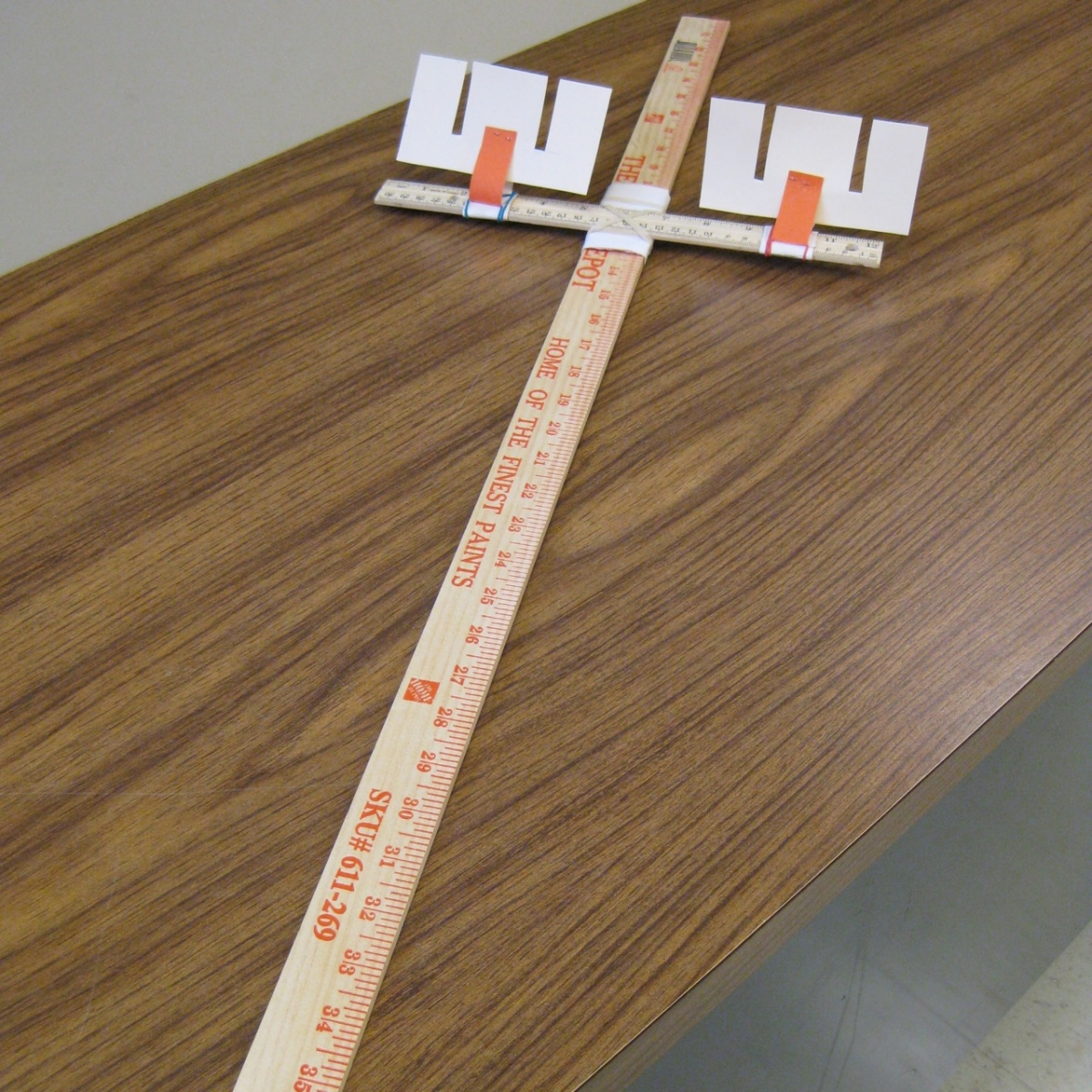
Figure 10. Student-built Jacob’s staff from Fall 2010 Ancient Mathematical Astronomy class (photograph by Toke Knudsen)
The above photo shows the Jacob's staff from the course. The instrument worked, though the paper on the smaller ruler was not stiff enough, nor attached firmly enough, to provide reasonable accuracy.
Telescope
A telescope is an instrument that uses lenses or mirrors (or both) to gather light, thereby allowing the user to directly observe distant objects.
For more information about the telescope, the Starry Messenger Project, developed by the Whipple Museum of the History of Science and the Department of History and Philosophy of Science at Cambridge University, has a website dedicated to the telescope at http://www.hps.cam.ac.uk/starry/galtele.html.
One group in Fall 2014 decided to design a telescope. Anderson and I were both positive about the idea. However, during the semester we found that we couldn't be sure that lenses bought online could be effectively fitted into the tubes we had available. As such, the group ended up purchasing and assembling a telescope kit instead.
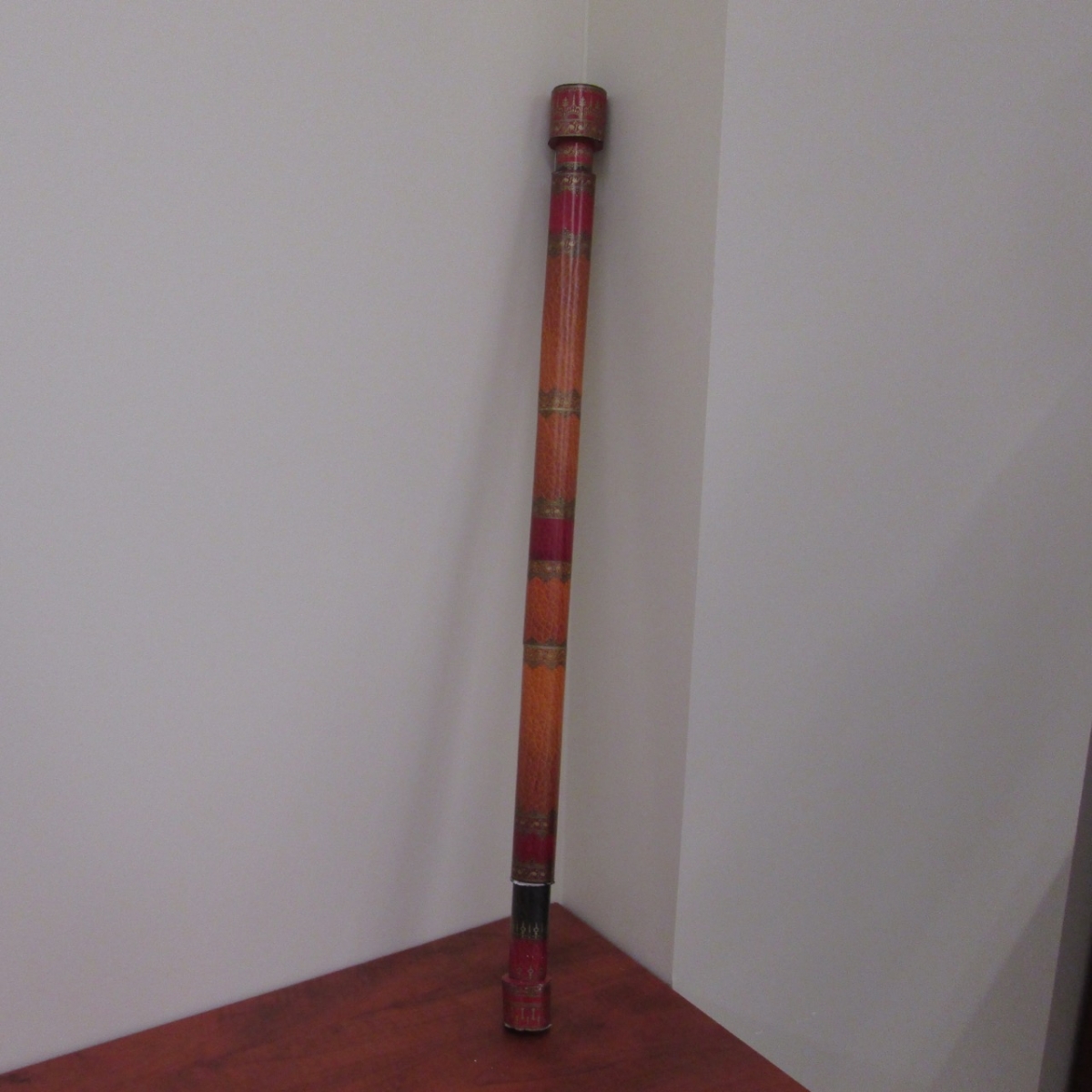
Figure 11. Student-built telescope from Fall 2014 Ancient Mathematical Astronomy class (photograph by Toke Knudsen)
The above photo shows the telescope. The telescope is a refractor (rather than a reflector), meaning it uses lenses to create a magnified image for the user. The instrument was harder to assemble for the students than expected, but it worked. However, we did not have sufficient time (or appropriate weather) to fully test it.
Bridging the Gap Between Theory and Practice: Astronomical Instruments - Three Sundials
Three Sundials
A sundial is a device by which the time of day can be determined by a shadow cast by the sun.
For more information about sundials, the Starry Messenger Project, developed by the Whipple Museum of the History of Science and the Department of History and Philosophy of Science at Cambridge University, has a website dedicated to sundials at http://www.hps.cam.ac.uk/starry/sundials.html.
Two groups decided to design sundials in Fall 2010. One chose to design only a plane sundial, whereas the other designed both a plane and an armillary sundial. All three sundials were constructed with components created by the 3D printer with the exception of the bases of the two plane sundials and the narrow metal rod which holds the armillary sundial.
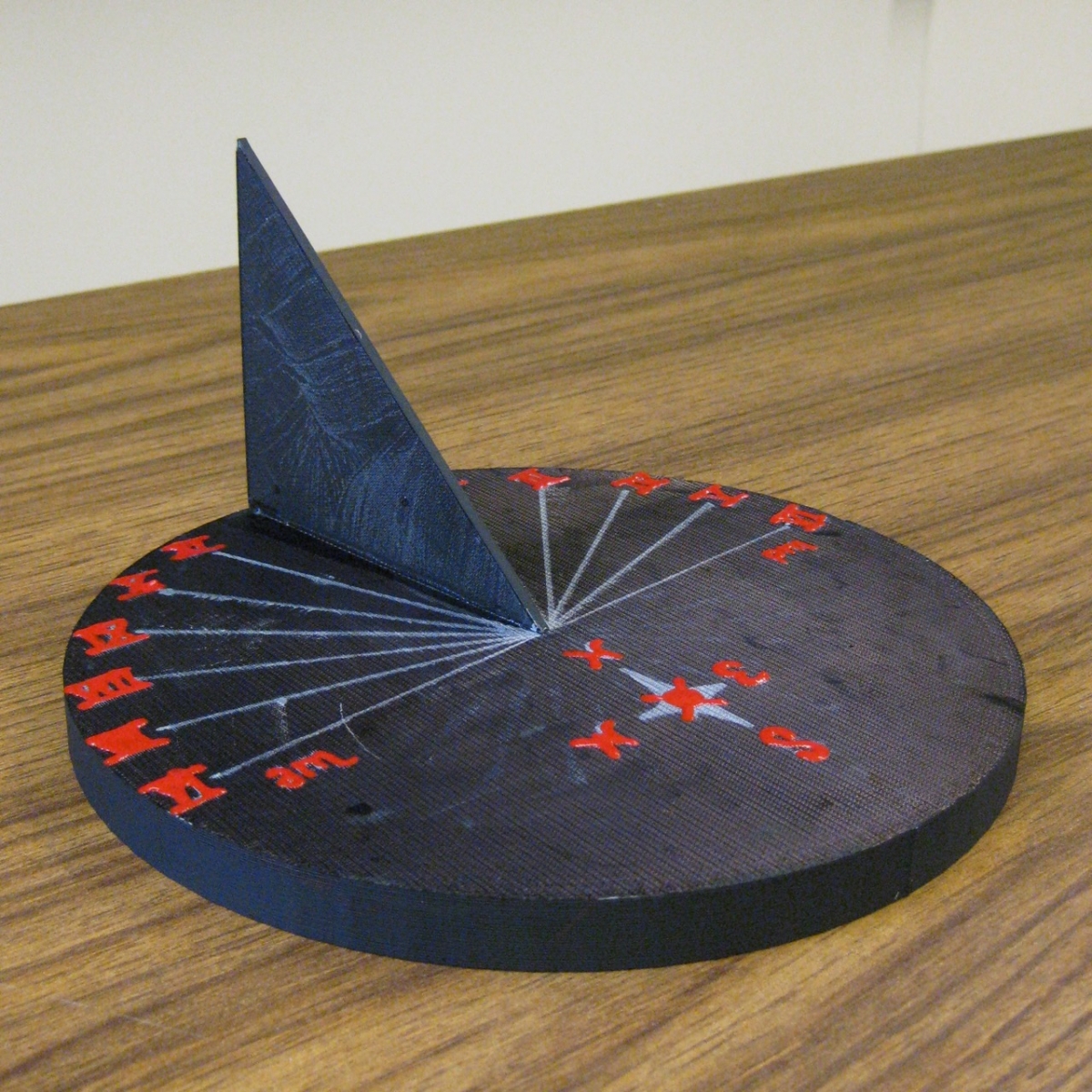
Figure 12. Student-built plane sundial from Fall 2010 Ancient Mathematical Astronomy class (photograph by Toke Knudsen)
The above photo is of the plane sundial designed by the first group. Although we did not end up having enough time (or sunshine) to really use the instrument, it worked.

Figure 13. Another student-built plane sundial from Fall 2010 Ancient Mathematical Astronomy class (photograph by Toke Knudsen)
The above photo is of the plane sundial designed by the second group. As with the previous sundial, we did not have enough time to fully use it, but it, too, worked.
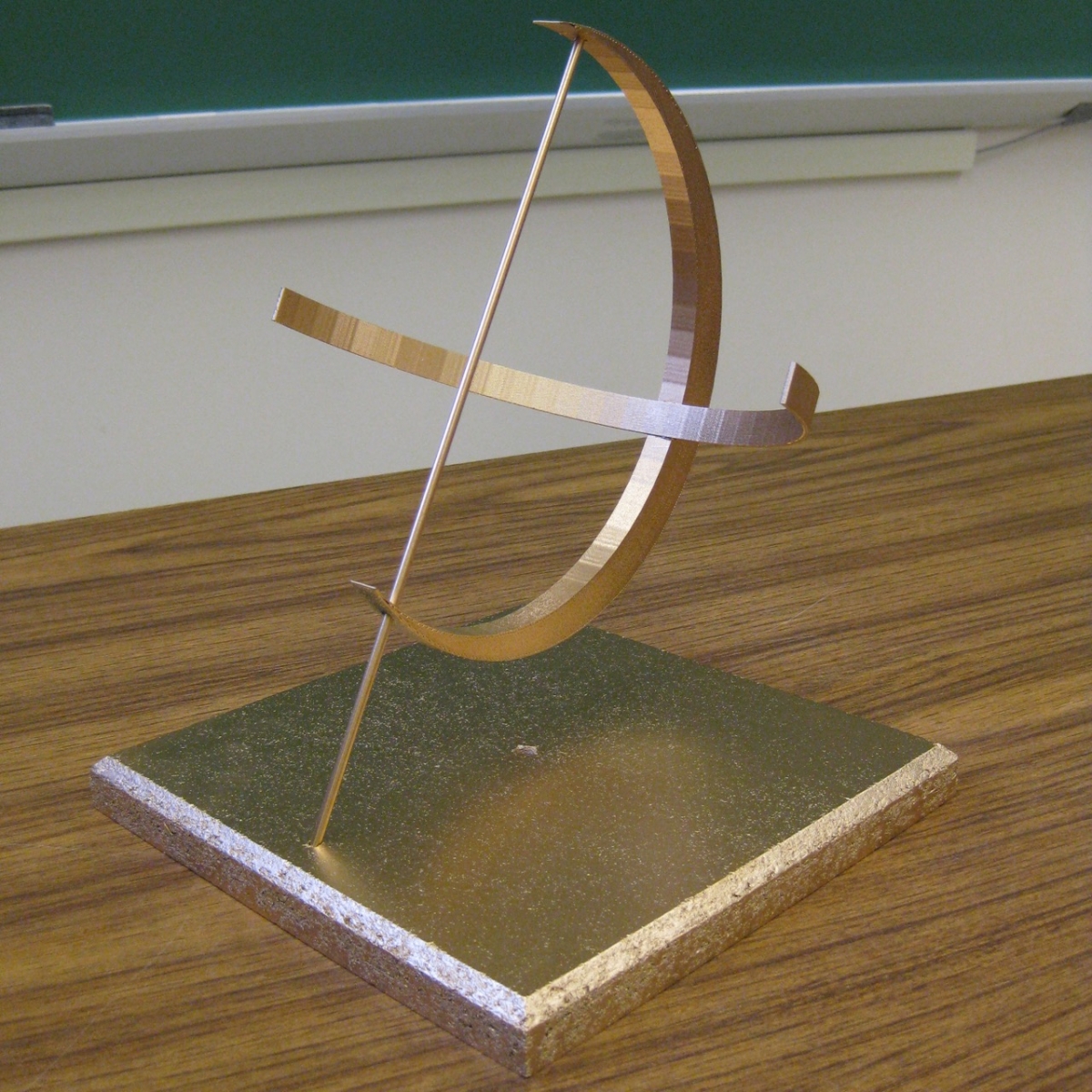
Figure 14. Student-built armillary sundial from Fall 2010 Ancient Mathematical Astronomy class (photograph by Toke Knudsen)
The above photo shows the armillary sundial designed by the second group. When in use, the metal rod throws a shadow on the instrument, which can be used to tell the time. The instrument is incomplete in that no lines corresponding to times had been made on it at the time that the photo was taken. With proper lines, the instrument would work.
Bridging the Gap Between Theory and Practice: Astronomical Instruments - Library Exhibitions - Conclusion
Library Exhibitions
The course and the construction of the instruments in Fall 2010 attracted some attention on campus, and some of the instruments (the three sundials and the successful armillary sphere) were put on display in an exhibition at SUNY Oneonta's Milne Library together with books on astronomy. The exhibition was on display from February 3, 2011 to March 27, 2011.
Similarly, an exhibition of two instruments (the quadrant and the sextant) was put up at Milne Library following the Fall 2014 course. The exhibition was on display from April 3, 2015 to May 1, 2015.
In 2011, three of the students from the class wrote the text accompanying the featured astronomical instruments, while I wrote the general description of the course and its instrument design phase, which was printed on an exhibition poster. In 2015, two students from the class wrote the descriptions of the two instruments on display, while I again wrote a general description.
Photos of the 2011 and 2015 exhibitions can be seen in Figures 15 and 16.

Figure 15. Exhibition of astronomical instruments built by Fall 2010 Ancient Mathematical Astronomy class (photograph by Heather Beach, SUNY Oneonta Library)

Figure 16. Exhibition of astronomical instruments built by Fall 2014 Ancient Mathematical Astronomy class (photograph by Toke Knudsen)
Conclusion
Overall, the course was a success. Some students put in more work than others, as is always the case, but all of them expressed to me that the design process had been a valuable experience and that it had increased their appreciation of the course. The hands-on approach energized many of the students and they enjoyed the learning process, whereas similar enthusiasm rarely comes from purely lecture-driven courses. I personally experienced that the students' theoretical understanding of the course was enhanced due to the design process and their many conversations and discussions with Anderson and me. This was helped along by the fact that the pre-Copernican, geocentric model that we worked with in most of the classes permeated the theories of nearly all of the instruments considered in the course. It was an enjoyable and very educational process for all, and several students were excited about taking a specimen home after the course.
Incorporating a design-and-construction component is certainly an approach that I would like to repeat, in future iterations of Ancient Mathematical Astronomy, of course, but also in other courses, such as Introduction to the History of Mathematics, which I teach regularly at SUNY Oneonta. It is furthermore something that I would highly recommend to anyone with an interest in history or in a hands-on approach in the classroom.
Acknowledgments
I am thankful to Amy Shell-Gellasch, James Evans, and Janet Beery for their help and encouragement in bringing out this article.